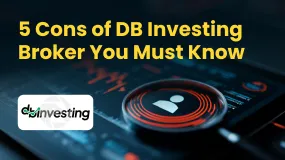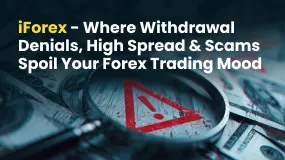简体中文
繁體中文
English
Pусский
日本語
ภาษาไทย
Tiếng Việt
Bahasa Indonesia
Español
हिन्दी
Filippiiniläinen
Français
Deutsch
Português
Türkçe
한국어
العربية
Exploring How Cover Rate Forex Helps You Hedge Against Potential Exchange Rate Fluctuations
Abstract:Exchange rates are constantly changing; they fluctuate based on trading volume, market sentiment, and several other factors. These fluctuations can raise concerns for you if they don’t turn out as expected. That’s why many like you are resorting to a cover rate forex strategy to hedge against currency fluctuations. Read on to learn more about it.

Exchange rates are constantly changing; they fluctuate based on trading volume, market sentiment, and several other factors. These fluctuations can raise concerns for you if they don‘t turn out as expected. That’s why many like you are resorting to a cover rate forex strategy.
Often associated with covered interest rate arbitrage, this strategy allows investors to borrow in a low-interest currency and convert it into a currency bearing high interest rates. Then follows the investment in that currency and a forward contract to get the original currency at a predetermined rate. This helps eliminate the exchange rate risk. Considering that it may sound complex, we prepared an useful guide on the cover rate forex phenomenon. Read on to understand the process.
Covered Interest Rate Parity and How It Protects You Against Forex Volatility
Covered Interest Rate Parity (CIRP) or cover rate forex is a popular forex concept where the difference in interest rates of two countries currencies should reflect in the forward exchange rate. It thus means that the whole process of borrowing a low-interest currency, converting it to a currency with higher interest rates, investing, and then using a forward contract to convert to the original currency should work in a way to eliminate the potential profit from fluctuations in exchange rates. The forward contract used in it helps cover or hedge the exchange rate risk.
Interest Rate Parity Condition Formula
The forward exchange rate is calculated using the formula below.
F = S x (1+id)/(1+if)
Where,
‘F’ stands for forward exchange rate.
‘S’ remains the existing spot exchange rate.
‘id’ is the domestic or base currencys interest rate.
‘if’ remains the quoted or foreign currencys interest rate.
Demonstrating Covered Interest Rate Parity with an Example
Example - You are contemplating a cover rate forex concept, keeping USD and GBP as two currencies. Assume that both of these US and UK-based currencies are trading at par. However, if the annual interest rate of the US is 8% and 4% in the UK, it would be better to borrow in GBP (the UK-based currency), convert it to USD in the spot market, and invest the amount in the US. However, to repay the loan in GBP, entering into a forward contract makes sense. With that, you can exchange USD for the former. Covered interest rate parity thus comes into the equation and helps eliminate the gains from the transaction.
As USD and GBP are trading at par, a unit of one currency is equivalent to another.
Forward price would thus be
1 x [(1+4%)/(1+8%)] = 0.96
How Different is Covered Interest Rate Parity from Uncovered Interest Rate Parity?
Yes, both these terms exist and have their own implications for forex investors. While covered interest parity covers the exchange rate using forward contracts, uncovered interest rate parity deals with rate forecasting and covering exposure associated with foreign exchange risks. The uncovered interest rate parity thus does not have forward rate contracts. Instead, it uses just the expected spot rate. If the forward and expected spot rates become equal, covered and uncovered interest rate parity will remain the same.
Conclusion
Understanding cover rate forex helps you make decisions that efficiently manage your risks. Its a powerful tool to protect your forex exposure against market volatility.
So next time you hear about forex fluctuations, use the cover rate forex strategy to cover your risks smartly.
Something New, Something Exciting, Something Rewarding for you!
Join the WikiFX Masterminds community to know whats in store for you!

Disclaimer:
The views in this article only represent the author's personal views, and do not constitute investment advice on this platform. This platform does not guarantee the accuracy, completeness and timeliness of the information in the article, and will not be liable for any loss caused by the use of or reliance on the information in the article.
Read more

5 Cons of DB Investing Broker You Must Know
It's always advisable to read online review articles about forex brokers you are thinking to Invest your money with. The forex market has become increasingly unsafe due to the rise of fraudulent brokers. Review articles help you spot scam brokers and protect your money. Read this important article about DB Investing to stay fraud alert.

iForex - Where Withdrawal Denials, High Spread & Scams Spoil Your Forex Trading Mood
Are high spreads charged by iForex disallowing you to make profits? Do you feel that you will never be able to withdraw from iForex? It's nothing new! Read this exposure story where we have highlighted complaints from several investors.

Forex Hedging Strategies - Calming You Amid Market Chaos
Finding it hard to deal with the forex market volatility? Do those ups and downs in currency pair prices make you more nervous or worried? You need the right forex hedging strategies. As a concept, forex hedging is about strategically opening additional positions to stay immune against adverse forex price movements. It’s about offsetting or balancing your current positions by buying or selling financial instruments. As a trader, your risk exposure is reduced, hence limiting your potential losses.

Scam Alert: Cloned Broker Scams on the Rise
Reputed authorities like the FCA have issued warnings against brokers who act genuine but are actually fake brokers. They copy details such as logos, names, branding, and sometimes even employee appearances to trick investors and steal money from them.
WikiFX Broker
Latest News
What Is Forex Currency Trading? Explained Simply
LSEG Announces £1 Billion Share Buyback Program
Ultima Markets enters the UK and gains the FCA license
SEC Lawsuit Targets Real Estate Fraud Scheme by Joseph Nantomah
A Beginner’s Guide to Trading Forex During News Releases
Forex Hedging Strategies - Calming You Amid Market Chaos
ASIC Regulated Forex Brokers: Why Licensing Still Matters in 2025
Key Events This Week: ISM, Trade Balance And More Earnings
Think Uncle Sam Owes $37 Trillion? It's Far Worse Than That
SkyLine Judge Community: Appreciation Dinner Successfully Held in Malaysia
Currency Calculator


